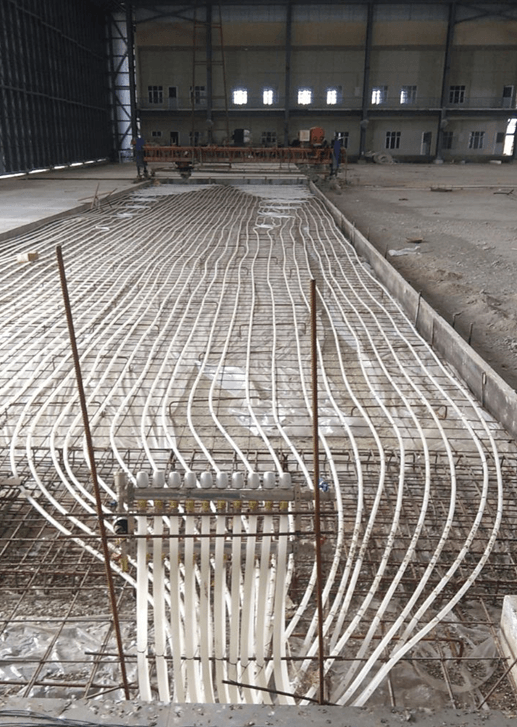Aircraft Hangars
Aircraft hangars require temperature of the space to be maintained around 20 degree Celsius. Depending on the place, either heating and cooling is required to maintain the temperature. Large amount of energy is consumed in providing heating or cooling to these spaces by using conventional HVAC systems. This, in turn, translates to huge amount of operating costs.
In cold spaces, where temperature is in the range of zero to 12 degree Celsius, basic ambient comfort to the workers in the hangars can be provided through Radiant heating systems.
By using Radiant systems:
1. We generate chilled water at around 15 to 18 degrees compared to 5 to 8 degrees of conventional HVAC systems, thereby reducing the input energy needed to the compressor. In case of Radiant Heating, conventional boilers can be replaced with solar heating systems, having payback less than 2 years.
2. The consumption of kW/tonne comes down due to increased efficiency of the chiller.
3. For a huge space like hangar, we reduce the need for AHUs and ducts for the circulation of air.
4. We maintain a uniform comfort temperature throughout the aircraft hangar. All the occupants would be able to enjoy comfort.
5. The air quality of the space is improved as recirculation of air is not done as in the case of conventional HVACs.

Figure 1 Radiant Heating System at Aircraft Hangar.
By generating chilled water at 15 to 18 degrees and eliminating the need for AHU and ducts, operations costs of around 30 to 50% can be saved to compared to the conventional HVAC systems. The maintenance of radiant cooling systems is simple and cost-effective as minimal resources are used.
In Radiant systems air is not used as a medium to cool rather water is used. Water has 3500 times more heat carrying capacity than air. Radiant floor cooling has PERT pipes arranged in loops on floor through which cold water at around 15 to 18 degrees is circulated, which takes away the sensible load in the space.
By using radiant systems, we offset a significant amount of GHG emissions by reducing the amount of electricity consumed by the fan motors and compressors.
